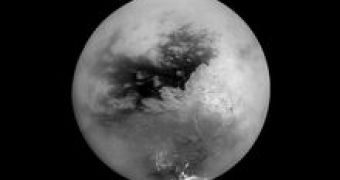As mankind's technological level evolves, so does the knowledge regarding one of our age-old obsessions: outer space. And the latest example is that of the extraordinary discovery made by the Cassini probe regarding one of Jupiter's moons, namely Titan.
Previous ground-based images of Titan had revealed starkly different light and dark patches that scientists thought might represent areas of differing composition. Titan was thought to be covered in oceans of methane, ravaged by huge waves generated by the different gravity conditions.
Up until now, that is. Because Cassini's latest infrared data and imagery allowed scientist to peer through the smog and look at the planet's surface. And what they saw was quite different from what any of them would have expected. They discovered an active volcano, about 19 miles (30 kilometers) wide, which could be pumping methane into the atmosphere, thus explaining the presence of the chemical compound which surrounds the planet with an impenetrable cloud.
Now, the scientists believe that the bright regions are areas of different slope, which are more exposed to the sun, thus reflecting more light, and that most of Titan's surface may be of an icy composition.
"Whatever the bright and dark regions on Titan's surface turn out to be, Cassini is taking us into a new and thrilling era of satellite exploration. With 40 more planned close flybys of Titan, as well as of several other saturnian moons, we are only at the beginning of this fantastic journey" writes Louise Prockter of Johns Hopkins University.

 14 DAY TRIAL //
14 DAY TRIAL //